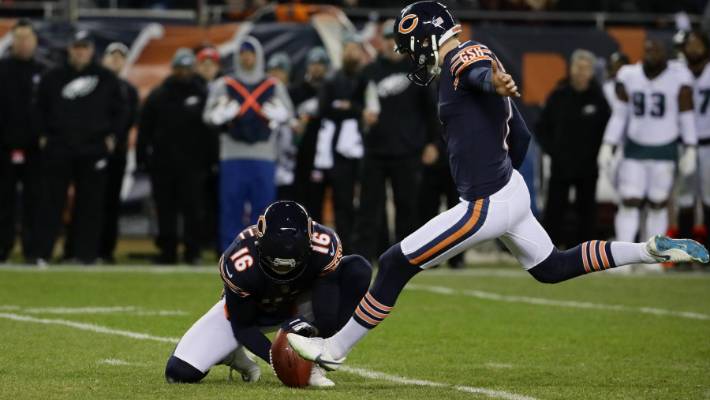
Like most Chicago football fans, I was pretty distraught after the Bears lost last Sunday’s playoff game courtesy of a missed field goal at the end — a kick that first hit the goalpost and then the crossbar before ultimately failing miserably. While most local fans were grief-stricken like me, some were irrationally inconsolable, demanding the scalp, and worse, of the Chicago kicker.
Ever the stats and randomness guy, I tried to talk my rabid friends off the ledge — with little success. The 40+ yard attempt was certainly not a gimme, even for the very best kickers, I opined. What if the gods had allowed the kick to bounce through; would the kicker have then been a hero? Why not blame the defense for allowing the late touchdown? Even with the final miss, the Bears kicker made 3 or 4 attempts for the game — certainly a credible day’s work. Would there be such venom if he’d missed the kick with 5 minutes left rather than 5 seconds? Alas, it seemed there was no convincing the hard core, especially regarding a guy who’ll almost assuredly not be with the team next year.
The kicker hit on 77% of his attempts this season and has made 84% over his career. These numbers compare favorably with the much-beloved kicker of the Super Bowl-winning team of 1986. Indeed the 1986 kicker made just 50% of attempts in the 40-49 yard range that season, and only slightly more than 50% of such attempts for his career. So, he’d have been just 50-50 to make the same kick this year’s guy missed.
Comparing kickers of different eras is tricky though. Performance and hence standards change over time. What was “par” 30 years ago may be bogey today.
What’s a grief-stricken, data-driven Bears fan to do? Find data to analyze of course. It didn’t take long to get started. ESPN has clean field goal numbers from 2002-2018 by team and kick length category. Though I’d ultimately like to dig back even further in NFL history, I thought this’d be a convenient point of departure. The remainder of this article revolves on scraping and wrangling the ESPN data, followed by several visuals that show 17 year trends.
For the analysis that follows, the technology used is JupyterLab 0.32.1 with Microsoft Open R 3.4.4. As always, the R work is driven by the data.table package and tidyverse ecosystem.
Read the entire blog here.
